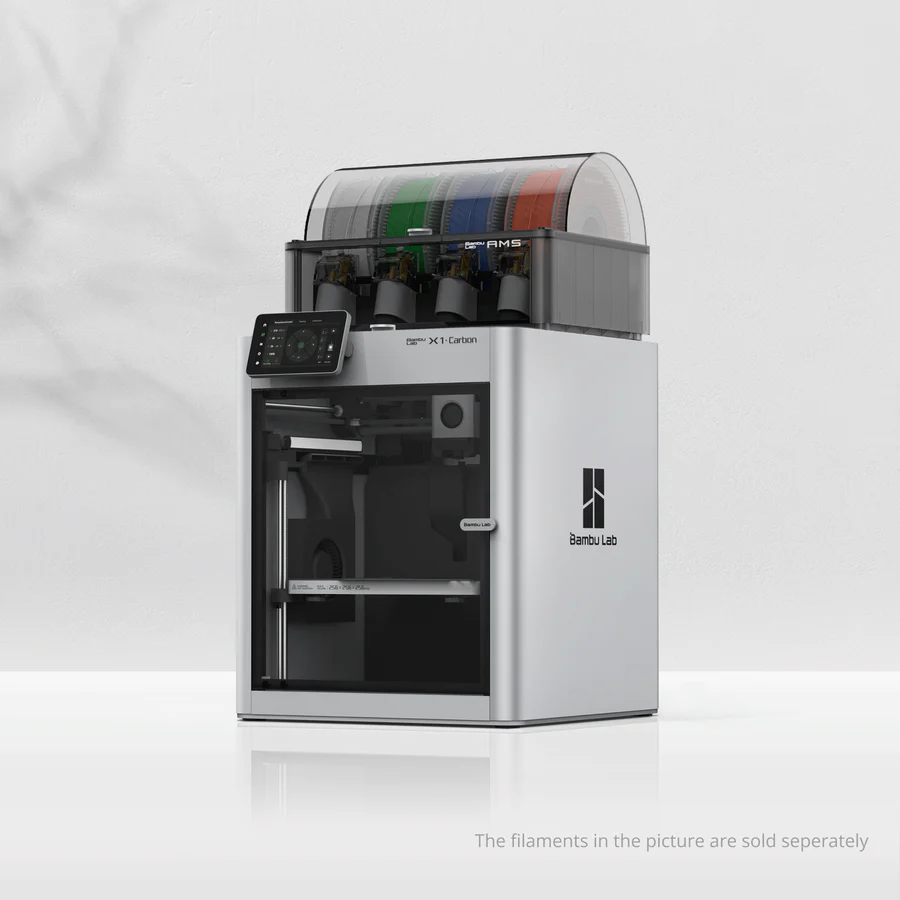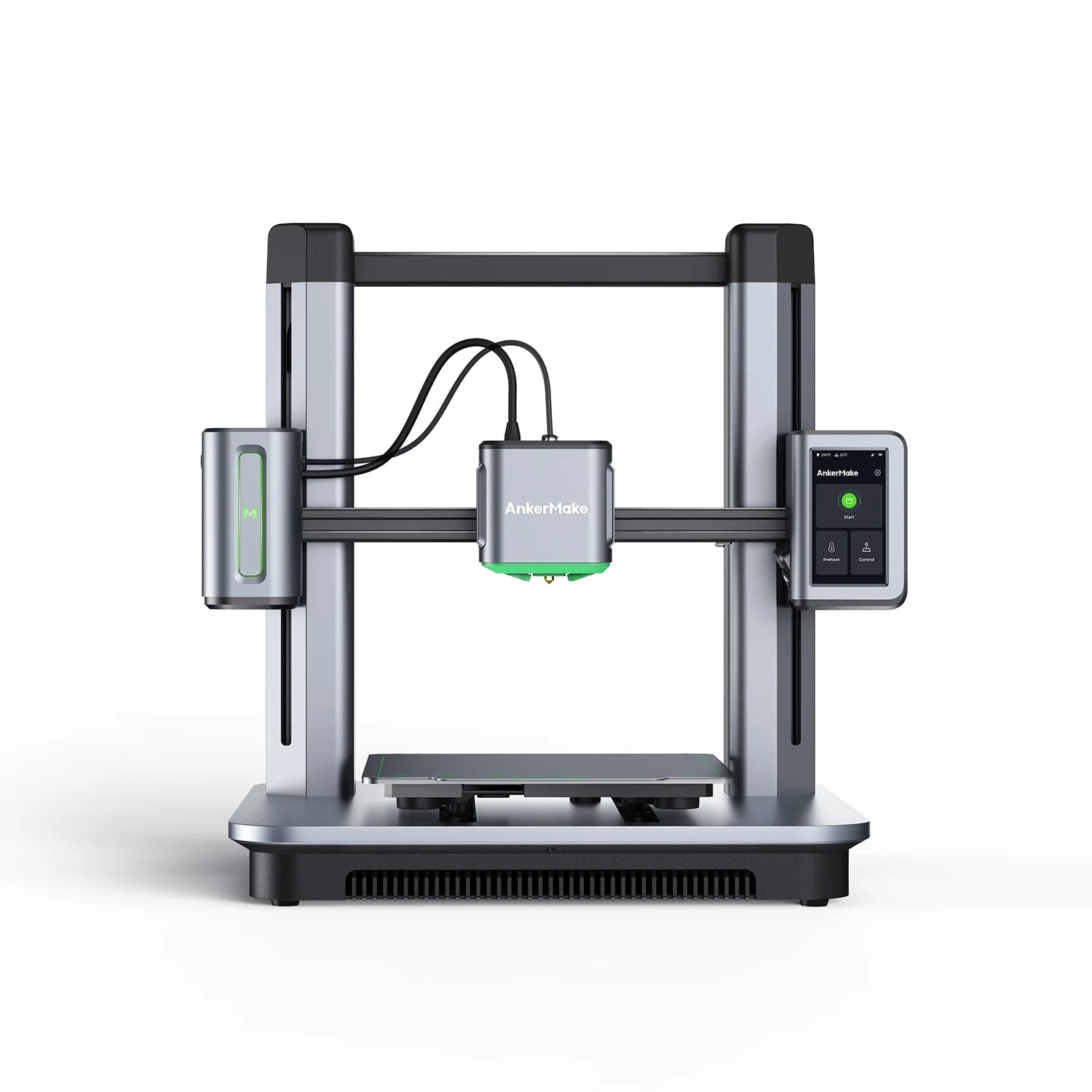Compare X1 carbon vs M5
Comparison between the best 3D printers
Choose the best 3D printer at the best price. The cheapest 3D printers are here.
Buy a 3D printer here with 3D Fila.
 |
 |
|
| Model | X1 carbon |
M5 |
| Printing Material | Filament | Filament |
| Buy Filament for Bambu Lab X1 carbon | Buy Filament forAnkerMake M5 | |
| Estimated price | $1449,00 | $497,00 |
| Manufacturer | Bambu Lab | AnkerMake |
| Release Year | 2023 | 2023 |
| Print Volume [mm] | 256x256x256 | 235x235x250 |
| Printer Size [mm] | 389x389x457 | 502x438x470 |
| Weight [kg] | 14,13 | 12,6 |
| Power Loss Recovery | YES | YES |
| Enclosed printer | YES | NO |
| Bed Leveling | Automatic | Automatic |
| Filament End Sensor | YES | YES |
| Bed type | Heated | Heated |
| Power supply system | Direct Drive | Direct Drive |
| Standard nozzle | 0,4 | 0,4 |
| Maximum Nozzle Temperature [°C] | 300 | 260 |
| Maximum Bed Temperature [°C] | 120 | 100 |
| Maximum printing speed [mm/s] | 500 | 500 |
| Filament holder | YES | YES |
| Camera for supervision | YES | YES |
| Recommended filaments | PLA, PETG, TPU, PVA, PA, PA-CF, Nylon, PC | PLA, PETG, ABS |
| Recommended slicers | Bambu Studio, Super Slicer, Cura, Prusa Slicer, Orca | AnkerMake Studio (macOS, Windows), Simplify3D, Ultimaker Cura, PrusaSlicer |
| Maximum Resolution [mm] | 0,1 | 0,1 |
| Processor | Quad ARM A7 1.2 GHz | |
| Display | Touchscreen 5'' | Touchscreen 4,3'' |
| Power Supply | 350 W | 350 W |
| Connectivity | Wifi, Bambu bus, Cartão SD | Wi-Fi, USB-C, OTA Upgrade |
| Operating systems | Windows, Linux, Macbook | Windows, Linux, Macbook |
| Date of registration in the system | 2024-04-10 | 2024-07-08 |
| Release date | 2023 | 2023 |
| Extra features | The Bambu Lab X1 Carbon revolutionizes 3D printing with stunning design, high print speeds, and a streamlined user experience. It stands out with its CoreXY system, a hotend capable of reaching 300°C, allowing for a wide range of filaments. Its LiDAR-assisted bed leveling system, vibration compensation, and AMS multicolor printing capability raise the industry standard. Print quality is impressive, with the ability to fine-tune for perfection. The X1 Carbon, with its closed build volume, not only promises but also delivers one of the most advanced 3D printing experiences available to consumers. | The AnkerMake M5 printer stands out for its impressive print speed, reaching up to 500mm/s. It features AI print monitoring, an integrated camera for creating timelapses, auto-leveling bed with pressure sensor, direct extruder, flexible PEI-coated build plate, and Wi-Fi and USB-C connectivity. Assembly is quick and easy, and the printer is designed to deliver high print quality and ease of use. |
| Support for multiple colors and materials (AMS and CFS) | YES | NO |
Notes * |
||
| Cost-benefit | 7 / 10 | 7 / 10 |
| Hardware | 6.4 / 10 | 4 / 10 |
| Tela | . | . |
| Print volume | 4 / 10 | 3 / 10 |
| Performance | 4 / 10 | 4 / 10 |
Conclusion |
| In comparing the Bambu Lab X1 Carbon and the AnkerMake M5, both printers provide remarkable capabilities, yet they cater to different user needs and budgets. The X1 Carbon is positioned as a premium option with its enclosed design, advanced features like LiDAR-assisted bed leveling, and a wide temperature range for filament compatibility. It excels in delivering high print quality and supports a broad range of materials, making it suitable for professional users or those seeking advanced functionalities. On the other hand, the AnkerMake M5 offers an exceptional cost-benefit ratio and is geared towards hobbyists or users looking for high-speed printing without the need for an enclosed build. It also features AI print monitoring and a user-friendly design, making it accessible for beginners while still maintaining good print quality. Conclusively, if you're looking for cutting-edge technology and versatility in material usage, the Bambu Lab X1 Carbon may be the right choice, albeit at a higher price point. Alternatively, if budget and ease of use are your top priorities, the AnkerMake M5 stands out as a well-rounded, economical solution. Ultimately, the choice between the two will depend on your specific printing needs, experience level, and budget considerations. |

